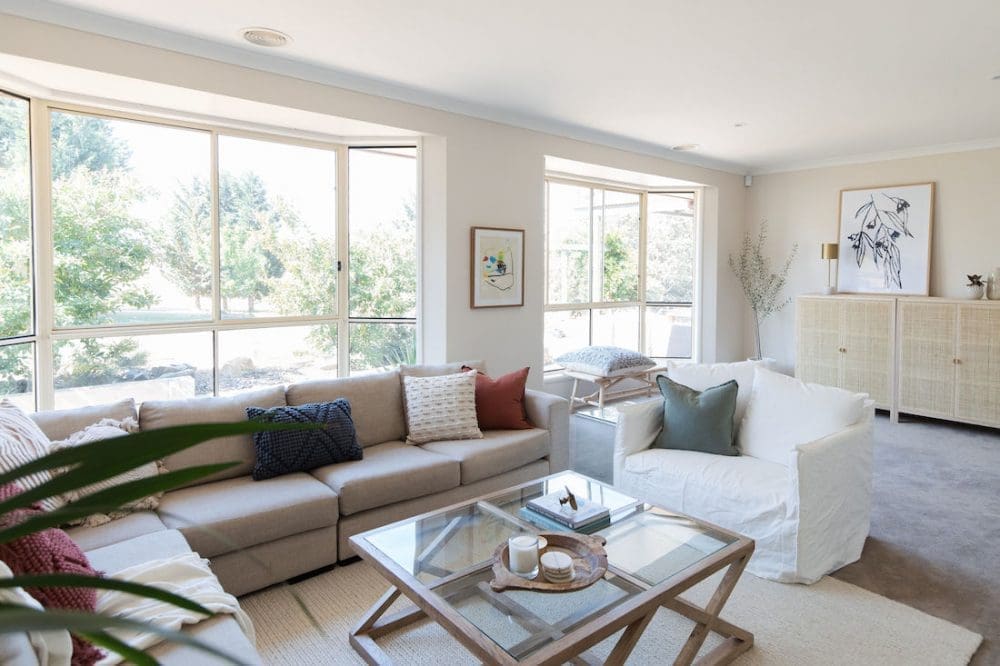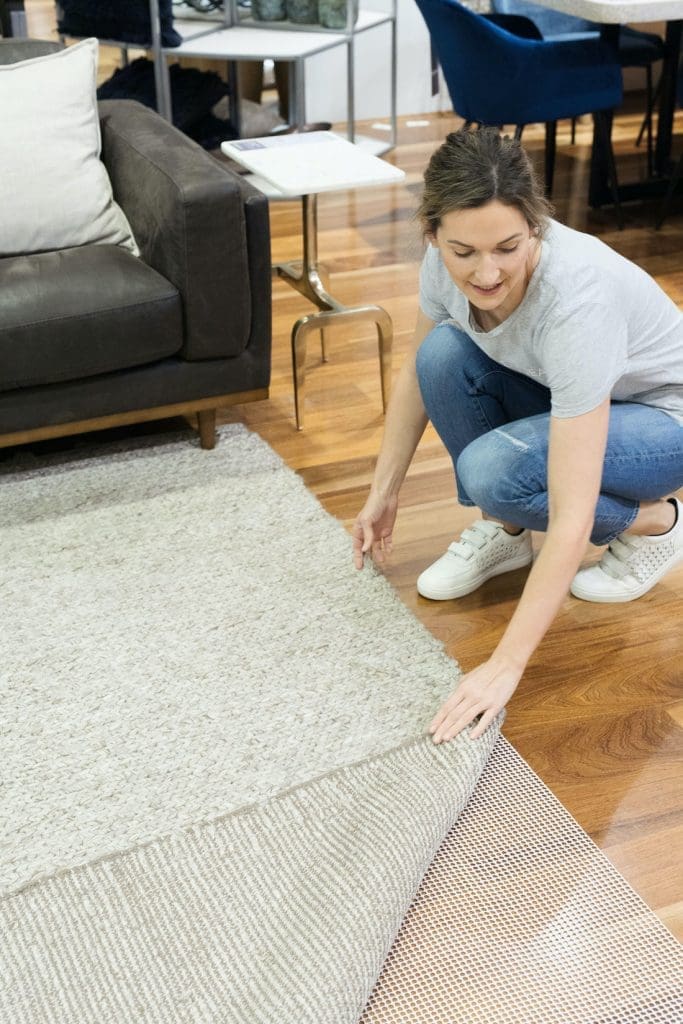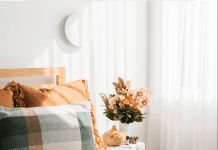Supported by Canberra Outlet
Finding the perfect rug for your home can be one of the trickiest decorating decisions you’ll need to make. Too often, I see people buy a rug that doesn’t suit the space — which makes it stand out for all the wrong reasons. To help, I’m sharing a guide on how to select the right rug with plenty of extra tips along the way!
Related article: 7 of my best interior styling tips to make a space work… when it just won’t!
Related article: How to update your living room for less: Top decorating ideas to suit your budget
Get the size right
The most common problem people make when buying a rug is to do with SIZE so my first tip is to measure up.
You need to know exactly what size rug you require before hitting the shops. The best way to do this is to grab a measuring tape and masking tape, and map out the size of the rug on the floor in your home.
Most rugs come in the following standard sizes 160x230cm, 200x300cm, 250x350cm and 300x400cm. Stores like Freedom, Adairs and Early Settler have a fab range of rugs in these sizes, or you can find even more sizing options at specialty rug stores.
Ideally, all your furniture legs will be on the rug but at the very least, the two front legs of your furniture should sit on the rug — such as the front legs of your sofa or the two legs at the foot of your bed.
The exception here is under a dining table where you need the rug to be big enough to fit your dining chair legs — even when they‘re pulled out from the table — otherwise you’ll create a trip hazard.
A rug should anchor your seating arrangement — and not just the table in the centre — so go big and have it extend beyond your furniture.
More often than not, people go too small with their rug which creates the illusion of a floating island in the middle of the room. It looks disjointed and makes a room appear smaller than it is.
If you go too big with your rug, you may not be able to fit it in the space or comfortably open and close doors. Ideally, your rug should be about 30cm away from walls to offer a bit of breathing room.

Be smart about the material you choose
Before getting caught up in the look of your rug, it’s essential to consider what material is right for you. All materials have different advantages and disadvantages, and I’ll run through the most common choices now.
Wool is the most common material for rugs because it’s durable and soft, and it’s also naturally more resistant to spillages.
Cotton can also be a great option that’s often used to make flat-weave rugs. It’s generally a bit more affordable and harder wearing.
As well as material, you need to think about pile height. A rug needs to be practical so if you’ve got small children or pets in the home, a long pile rug probably isn’t ideal.
I love jute rugs for their durability and the natural earthy vibe they bring to a space. When it comes time to clean, you can simply take these outside and wash with a hose. These are a great option for high traffic areas.
Synthetic rugs are also incredibly popular as they often look just like natural rugs but are much easier to clean and often less expensive. It’s important to feel these in real life though to make sure the material feel luxurious and comfortable.
The type of flooring you place the rug onto is also important. If you plan on putting a rug onto a carpeted floor, you need to select a thicker rug that will hold its shape. Whenever placing a rug onto hard flooring (such as timber or tile), I recommend using an anti-slip rug pad or double-sided carpet tape.

Find a style to suit your home
From here, you can get onto the fun part of finding a rug to suit your STYLE!
The two biggest things I look for are pattern or weave, and colour.
When it comes to pattern, the general rule is to either go bold on your walls or the floor. If you want a heavily patterned rug, it’s best to play down artwork and wallpaper in the space.
I often look for rugs with an interesting weave, rather than a bold pattern, as it’s more neutral and allows you to change up the look of the space while still proving interest.
According to Ben Herbert from the online carpet and rug store Designer Carpet, opting for traditional rugs brings craftsmanship and timeless design into your home. “Unlike modern options that often have minimalist styles, these rugs feature unique patterns and vibrant colours that can warm up any space,” he says. It’s this combination of artistry and the quality of materials sets them apart and ensures durability.
When it comes to colour, you also need to be practical, a light cream rug with a black-haired dog for example will drive you crazy. Mid-tone rugs are the easiest to keep clean and you want to find a shade that complements your space. Complement doesn’t mean ‘match’ though. Look for a rug that contrasts with the other flooring and furniture, while still fitting the overall colour palette.
If you’re unsure what colour will work best in your home, try the stylist trick of selecting a rug that has an accent colour the same as the main colour in the room. For example, if most of the furniture is grey, find a rug with a grey accent that will pick up on the overall colour scheme and bring harmony to the space while still offering enough contrast to pop.
Shopping tips
Be sure to take plenty of photos of your room before hitting the shops so you can refer back to these and consider if the rug will work with the other elements in your room, such as paint colour, window coverings and of course furniture.
If you’re able to take swatches shopping with you, such as a sample of your timber flooring, that’s even better!
Will you use these tips to shop for your next rug? Do you have more tips we could add to this guide on how to select the right rug? Tell us in the comments below!
More styling advice








